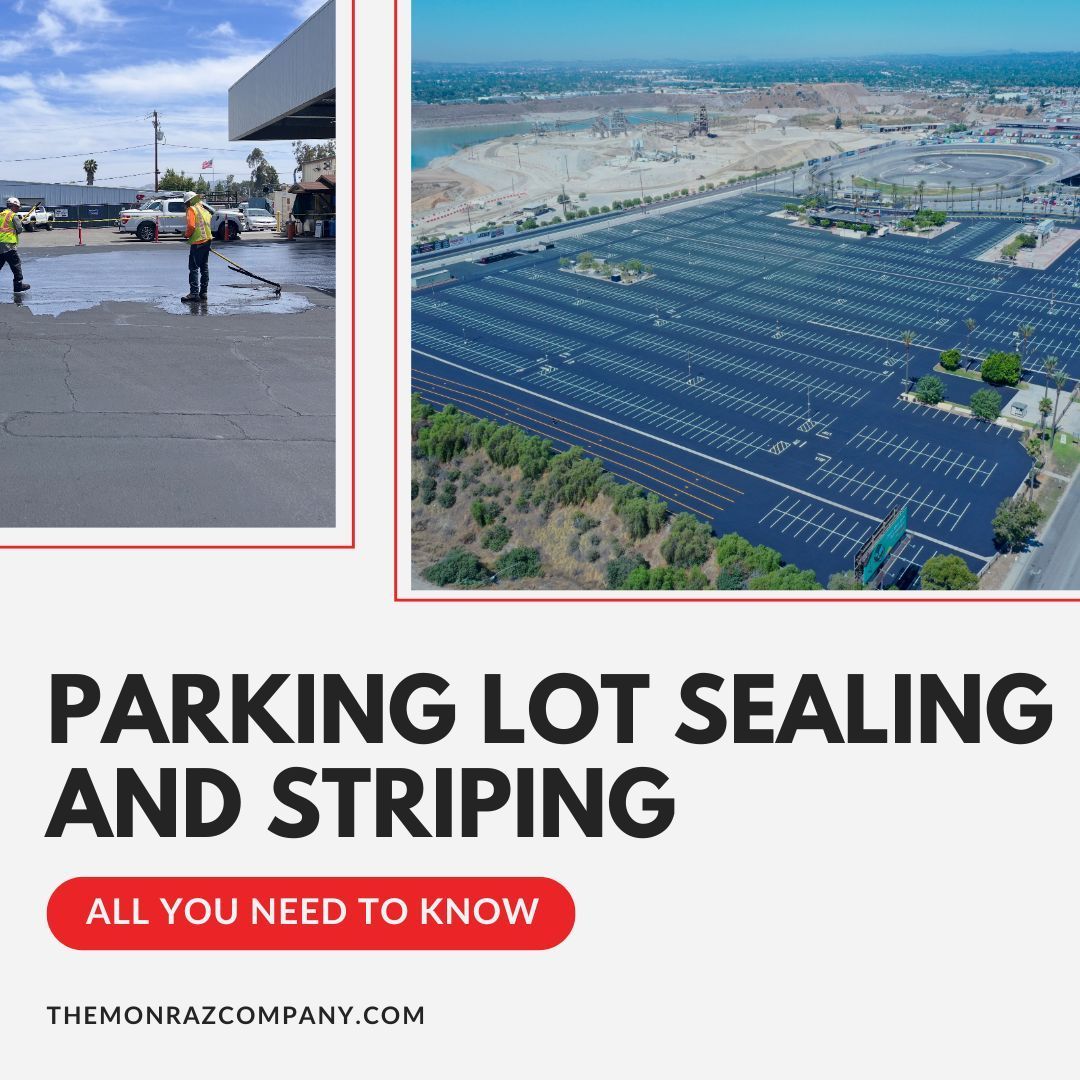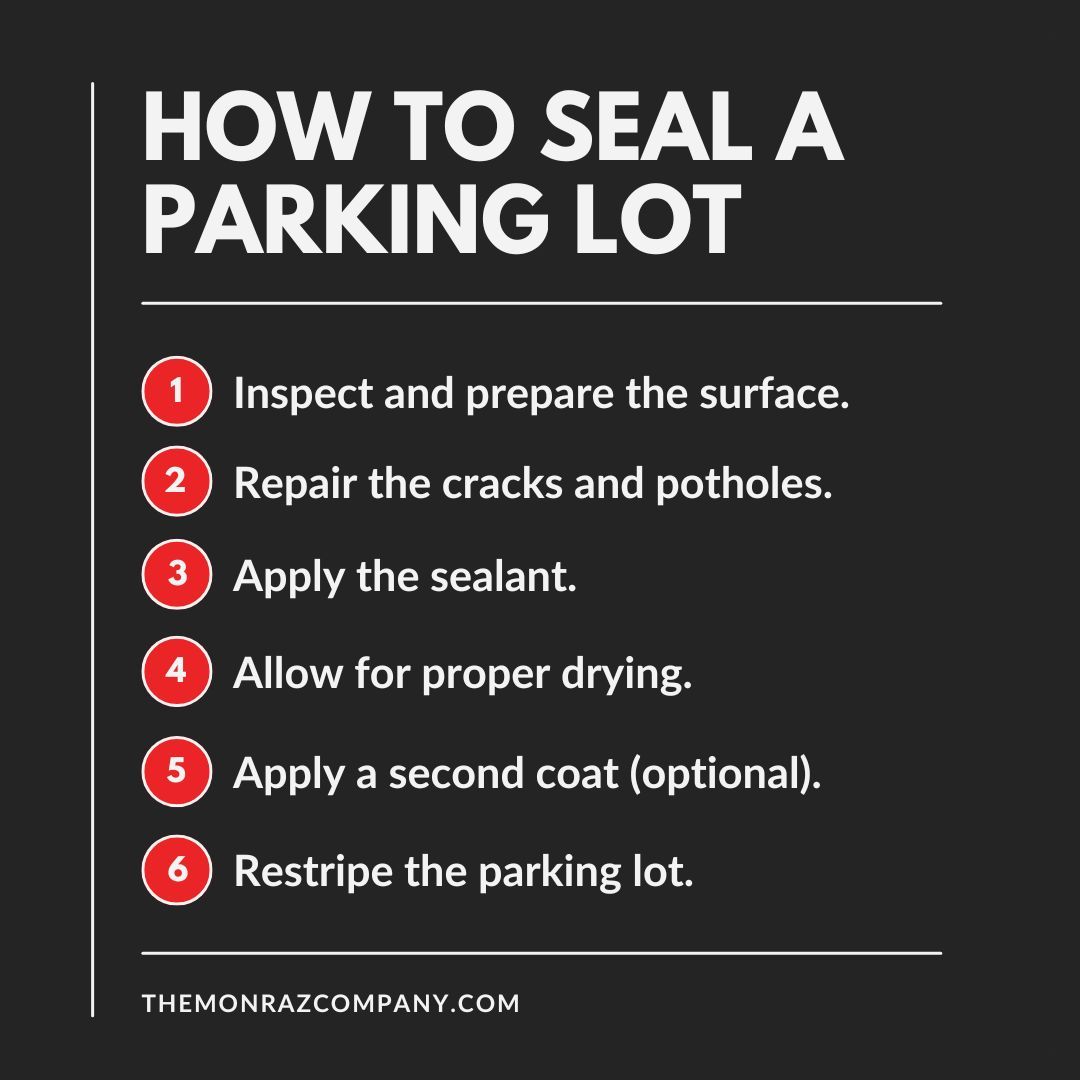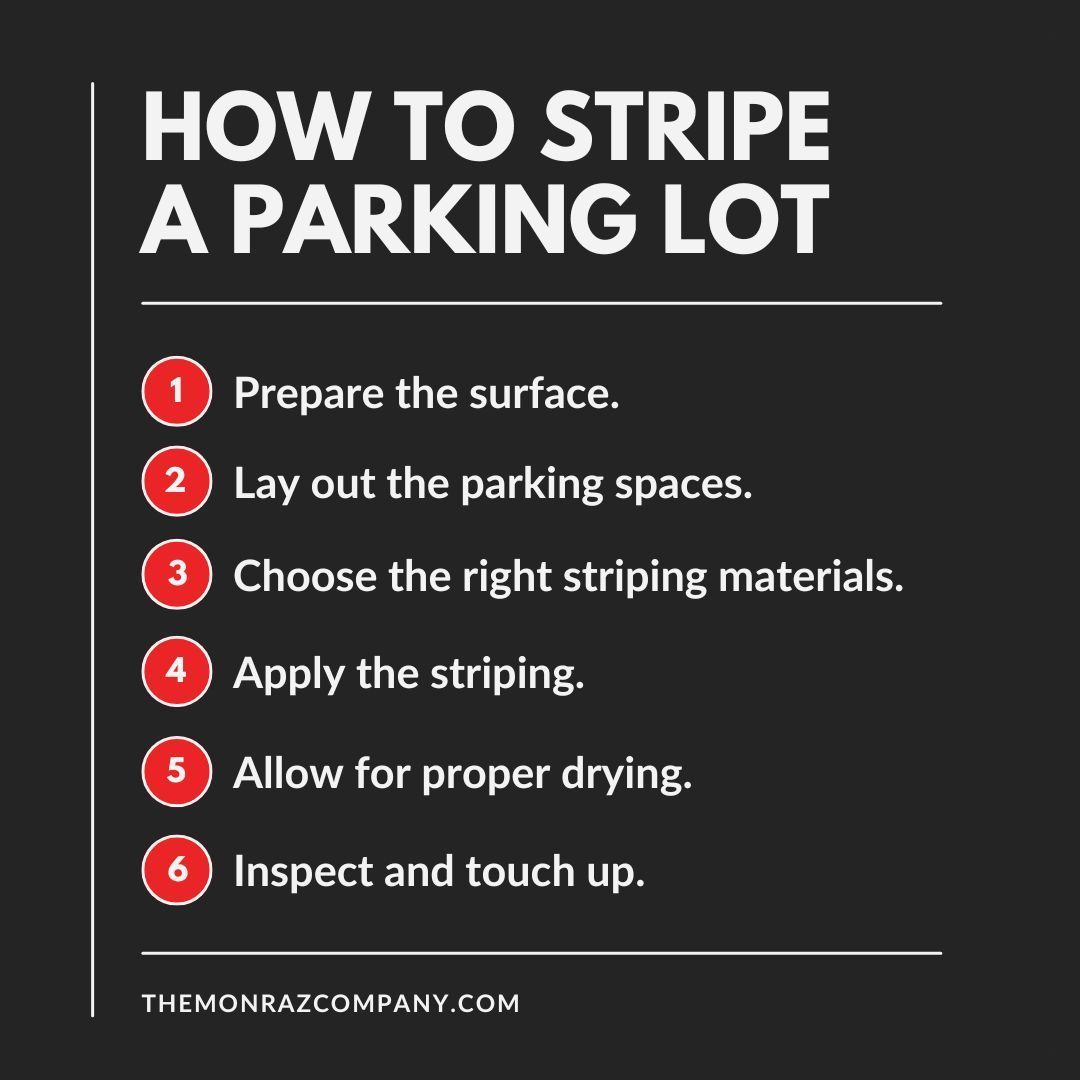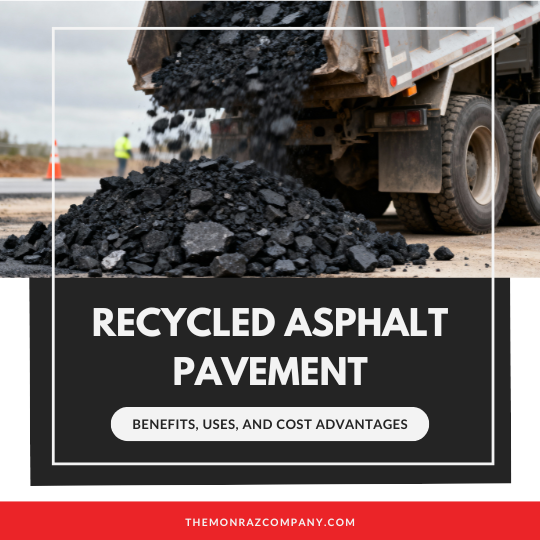Parking Lot Sealing And Striping: All You Need to Know
The condition of your parking lot can have a significant impact on the overall appearance and value of your commercial property. A well-maintained, visually appealing parking area not only creates a positive first impression for your customers and visitors but also helps to preserve the long-term integrity of your paved surfaces.
Parking lot sealing and striping are two essential components that work together to keep your asphalt or concrete parking lot in top shape. In this comprehensive guide, we’ll dive deep into the importance of these maintenance practices, the frequency with which they should be performed, and the step-by-step processes for ensuring a successful sealing and striping project.
Whether you own a retail center, a commercial office building, or any other type of commercial property with a parking lot, understanding the significance of parking lot sealing and striping is crucial. By dedicating this post to these essential maintenance tasks, we aim to provide you with the knowledge and insights you need to keep your parking lot looking its best and functioning at peak efficiency.
But, before you dive in, are you in Southern California and need your parking lot sealing and stripping done effectively and efficiently? Then, call the experts at TMC Engineering ! We’d love to help you with your gravel projects or any other concrete or asphalt work!

Parking Lot Sealing And Striping
While parking lot sealing and striping serve distinct purposes, they are intrinsically linked when it comes to maintaining the overall condition and appearance of your commercial property’s paved surfaces.
Parking lot sealing, or sealcoating , is the process of applying a protective layer over the existing asphalt or concrete. This sealant acts as a barrier, shielding the pavement from the damaging effects of weathering , UV exposure, and chemical spills. By creating a uniform, black finish, sealcoating not only extends the lifespan of your parking lot but also enhances its visual appeal, making it more inviting and professional-looking for your customers and visitors.
On the other hand, parking lot striping involves the application of paint or thermoplastic markings to delineate parking spaces, fire lanes, and other directional signage. These lines and symbols play a crucial role in organizing traffic flow, improving accessibility, and ensuring the overall safety of your parking lot. Well-maintained striping helps to prevent accidents, guide drivers and pedestrians, and create a more efficient, user-friendly environment.
While sealing and striping may serve different primary functions, they work in tandem to keep your parking lot in pristine condition. The sealant protects the underlying pavement, while the striping provides essential visual cues and guidance for those using the space. By addressing both aspects of parking lot maintenance, you can ensure a cohesive, high-quality, and long-lasting solution for your commercial property.
Only need a small repair at this time? B e sure to check out our guide on concrete parking lot repair . This comprehensive resource covers the step-by-step process for identifying and addressing cracks, potholes, and other defects in your concrete pavement.
How Often Should You Sealcoat Asphalt Parking Lot s ?
The frequency of parking lot sealcoating can vary depending on several factors, but as a general rule of thumb, it’s recommended to sealcoat an asphalt parking lot every 2 to 3 years.
The climate and weather patterns of your geographic region can significantly impact the need for more frequent sealcoating. Parking lots in areas with harsh winters, heavy rainfall, or intense sunlight may require more regular attention to protect the asphalt pavement from the elements and prevent accelerated wear and tear.
Additionally, the volume of traffic your parking lot experiences can also influence the optimal sealcoating schedule. High-traffic areas, such as those serving shopping centers, restaurants, or industrial facilities, may need to be seal-coated more often to maintain their structural integrity and appearance.
By closely monitoring the condition of your parking lot and being proactive in addressing any signs of deterioration, you can determine the ideal timing for sealcoating. Regularly inspecting the surface for cracks, potholes, or fading can help you stay ahead of the curve and avoid more costly and time-consuming repairs down the line.
Striking the right balance between reactive maintenance and preventative sealcoating is key to preserving the long-term functionality and curb appeal of your commercial property’s paved surfaces. By staying on top of this essential task, you can ensure that your parking lot remains in top condition for years to come.
What Is Parking Lot Striping?
Parking lot striping refers to the application of paint or thermoplastic markings on the surface of a paved parking area. These lines and symbols serve several essential purposes that contribute to the overall functionality and safety of your commercial property.
Firstly, parking lot striping helps to delineate individual parking spaces, ensuring that vehicles are organized and positioned efficiently within the available space. Clear markings for each spot prevent haphazard parking and create a more orderly, user-friendly environment.
Secondly, directional striping, such as arrows and stop lines, guides the flow of traffic through the parking lot. By directing the movement of vehicles and pedestrians, these markings help to prevent accidents, reduce congestion, and improve the overall circulation within the paved area.
Thirdly, parking lot line striping is used to designate specialized zones, such as fire lanes, handicap spaces, or loading zones. These specialized markings ensure that critical areas are properly identified and reserved for their intended purposes, contributing to the safety and accessibility of your property.
Finally, well-maintained parking lot striping enhances the visibility of the paved surface, making it easier for drivers and pedestrians to navigate the space, especially in low-light conditions. This improved visibility can help to prevent accidents and create a more welcoming atmosphere for your customers and visitors.
By investing in regular parking lot striping, you can ensure that your commercial property’s paved surfaces remain organized, accessible, and visually appealing, ultimately contributing to the overall functionality and curb appeal of your business. Read all about parking lot striping standards to know more.

How To Seal A Parking Lot
Sealing a parking lot is a multi-step process that requires careful preparation and attention to detail. Here’s a step-by-step guide to ensure a successful parking lot sealcoating project:
Step 1: Inspect and prepare the surface.
Begin by thoroughly inspecting the parking lot for any cracks, potholes, or other defects. Addressing these issues before applying the sealant is crucial, as they can compromise the effectiveness of the sealing process. Use a power washer or broom to remove debris, oil, and other contaminants from the surface, ensuring a clean and dry canvas for the sealant.
Step 2: Repair the cracks and potholes.
Step 3: Apply the sealant.
Once the surface is clean and any necessary repairs have been made, it’s time to apply the sealant. Use a high-quality, asphalt-based sealer and apply it in thin, even coats using a squeegee or sealcoating machine. Be sure to follow the manufacturer’s instructions for proper application and drying times.
Step 4: Allow for proper drying.
After the sealant has been applied, it’s essential to allow ample time for it to fully dry and cure. This typically takes 24 to 48 hours, depending on the weather conditions and the specific sealant product used. Avoid any foot or vehicle traffic during this curing period to ensure the best possible results.
Step 5: Apply a second coat ( o ptional).
Depending on the condition and age of your parking lot, you may choose to apply a second coat of sealant. This can help to further protect the surface and create an even, consistent finish.
Step 6: Restripe the parking lot.
Once the sealant has cured, it’s time to restripe the parking lot. This will refresh the lines and symbols, ensuring clear delineation of parking spaces, traffic flow, and other important markings.
For complete instructions, see below:

How To Stripe A Parking Lot
Striping a parking lot is a crucial step in maintaining the organization and safety of your paved surfaces. Here’s a step-by-step guide to ensure a successful parking lot striping project:
Step 1: Prepare the surface.
Before applying any paint or thermoplastic markings, thoroughly clean the parking lot surface. Use a power washer or broom to remove any dirt, debris, or existing paint that may interfere with the new striping.
Step 2: Lay out the parking spaces.
Measure and mark the location of each parking space, fire lane, and other designated areas. Use chalk or a marking tool to create a guide for the striping process.
Step 3: Choose the right striping materials.
Choose high-quality, durable paint or thermoplastic materials specifically designed for parking lots, as they are formulated to endure heavy traffic and harsh weather conditions.
Step 4: Apply the striping.
Using a paint sprayer or roller, apply the striping material in thin, even coats. Follow the layout from the previous step carefully, ensuring all lines and symbols are clearly and precisely defined.
Step 5: Allow for proper drying.
Depending on the striping material used, allow ample time for the paint or thermoplastic to fully dry and cure. This typically takes several hours, so be sure to plan accordingly and avoid any foot or vehicle traffic during this time.
Step 6: Inspect and touch up.
Once the striping has dried, carefully inspect the entire parking lot to ensure that all lines and symbols are clear, consistent, and properly aligned. Make any necessary touch-ups or adjustments to ensure a professional, high-quality finish.
By following these steps, you can create a well-organized, visually appealing, and safe parking lot for your customers and visitors. Regular asphalt maintenance and refreshing of the striping will help to keep your parking lot in top condition for years to come.
At TMC Engineering , we have the expertise to seal and stripe your parking lots. Our professionals apply high-quality sealers using expert techniques so your pavement endures many additional years of use! Contact us to discuss solutions for your property!
Striping and sealing are important for ensuring your parking lot functions well and lasts longer.
Remember, maintaining the condition of your parking lot through regular seal coating and striping is an essential part of preserving the appearance and value of your commercial property. By proactively addressing these important tasks, you can ensure that your parking lot remains functional, safe, and visually appealing for years to come.
Our team of experienced paving professionals at TMC Engineering provides a wide range of transportation construction services to meet all of your project needs. Whether you need asphalt paving , striping, sealing , or concrete work completed, we have the expertise and equipment to handle the job efficiently and cost-effectively. By combining extensive industry knowledge with high-quality materials and workmanship, we can deliver durable, long-lasting results!
Contact us today to discuss your requirements and receive a customized proposal. We aim to forge strong partnerships through collaboration on quality-focused solutions!




